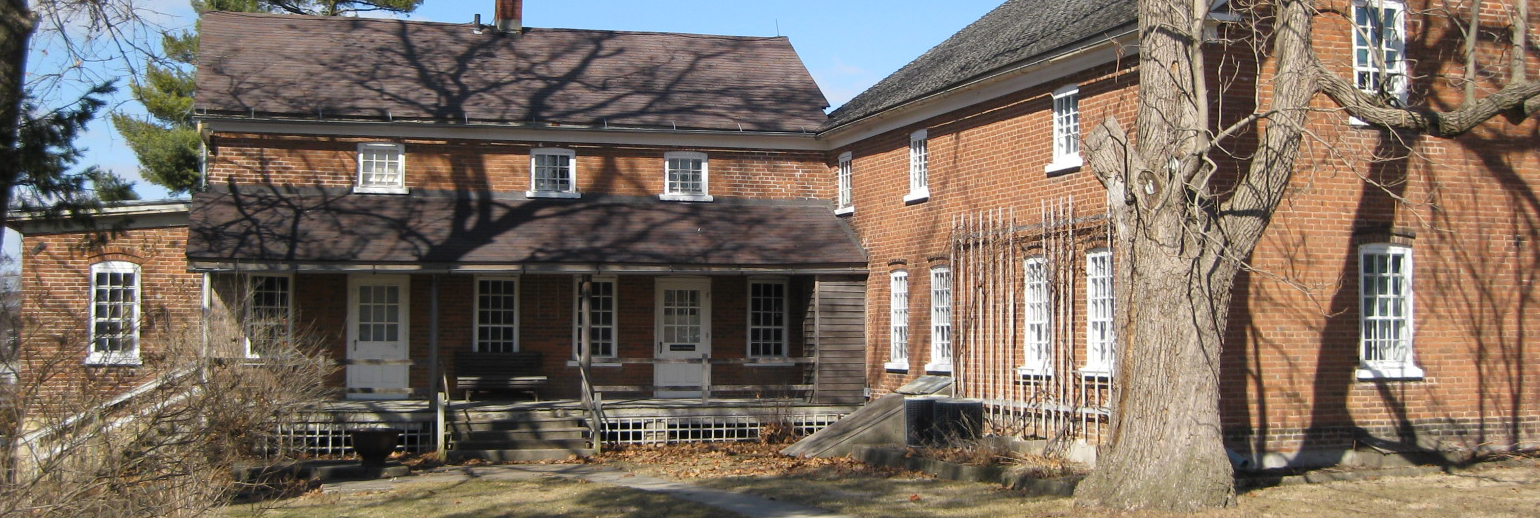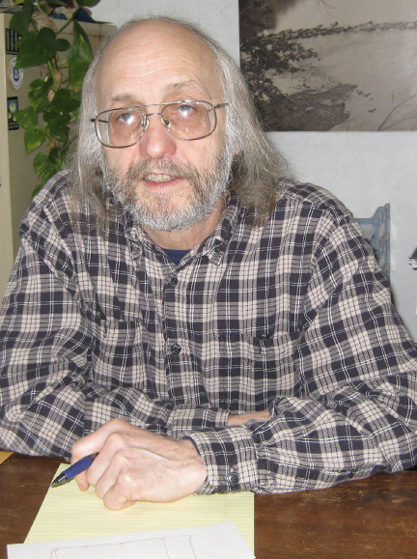Since June 15, 1983, I’ve had the good fortune to serve as the Executive Director of the Amana Heritage Society, a local non-profit historical society in Amana, Iowa. I was born and raised in Middle Amana and live in the house of my childhood. Having done my graduate work in history at the University of Iowa I am doubly fortunate to be a historian in and of my own home town.
The Amana Heritage Society was formed in 1968 with a mission to collect, preserve and interpret the Amana Colonies’ cultural heritage. Amana has a rich German ethnic heritage and was founded on strong religious conviction, but its communal organization—and the landscape, villages, buildings, material culture and cultural traditions which communalism fostered—is what put it on the map, or at least on the National Register of Historic Places, a status it received in 1965 as one of the largest National Historic Landmarks in the United States. My good fortune again: we have a great story to tell, relevant to today, about the power of religious faith and cooperative labor, the place of individuals and families in a community, and sustainability to name just a few themes.
The Amana Heritage Museum in the village of Amana began with the acquisition of a historical communal-era residence, the Noe House, which was converted into a museum with exhibits on its two floors which trace the history of the community from Europe to Amana. The property included the adjacent washhouse/woodshed, virtually unchanged since the early 20th century, which is also open to museum visitors. In 1975 we added the neighboring village schoolhouse to the museum complex. Today the second floor of the schoolhouse houses the museum offices, curatorial workspace, and the library and archives. The main floor has the visitor reception area, the museum bookstore, and a 60-seat auditorium in which we show a 20-minute orientation video to museum visitors.
The Amana Heritage Society also owns or leases other historical properties in the Amana Colonies. Two have become central points of our interpretation: the Communal Kitchen in Middle Amana (leased from a private individual) and the Homestead Church (acquired from the Amana Church Society). As the places where people ate together and worshipped together, these buildings are ideal settings for visitors to learn about life in communal Amana and the religious beliefs and traditions of the Amana people. These spaces give visitors a clear sense of how life was different in communal Amana. The Heritage Society owns three additional historical buildings: the Homestead Store, the Homestead Blacksmith Shop, and the Middle Amana Cooper Shop. We also rent the 1858 High Amana General Store which we use as a museum store.
One of the current points of emphasis in the museum profession is to encourage museums to be closer to the communities in which they are located and responsive to their needs. For example, the theme of this year’s Iowa Museum Association conference is “Celebrating Community.” For the Amana Heritage Society, that hasn’t been much of a concern. The society has always been deeply grounded in the Amana community. The museum was founded by an ad hoc group of local residents, and community volunteers have continued to play a key role in the development and growth of the organization. The organization is governed by a Board of Directors consisting of nine volunteer members from the community. The museum’s collections of artifacts, documents and photographs have all been built on donations from community members. In the beginning community residents and descendants donated items to the museum from their woodsheds and attics—artifacts, examples of Amana’s material culture. We are still nearly overwhelmed with donations from individuals, but now we are receiving items from peoples’ closets and file cabinets, mostly manuscripts and photographs.
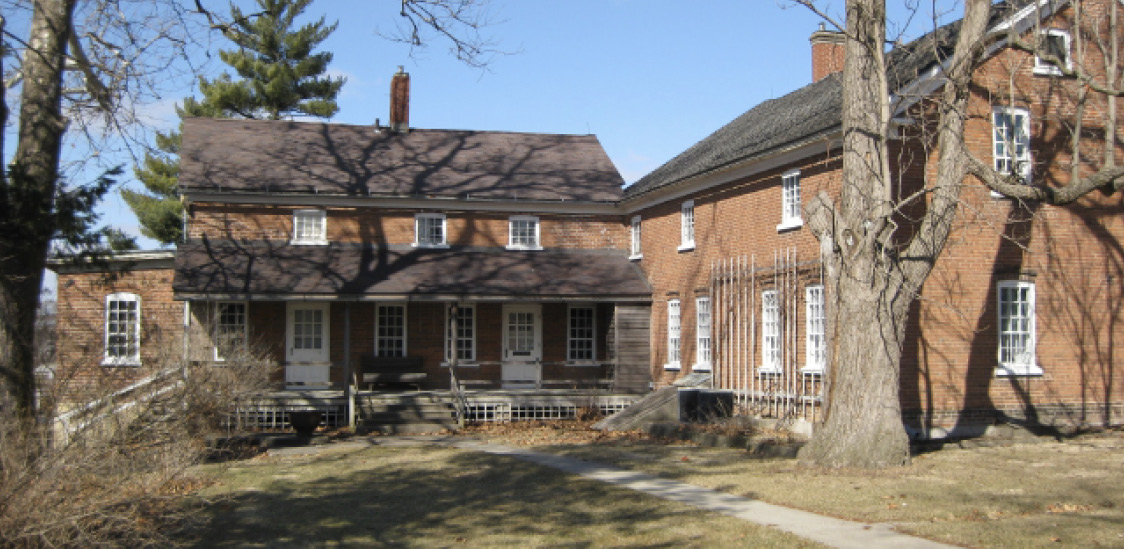
The Museum of Amana History. Photo courtesy of Jon Andelson
The Amana Heritage Society takes an active role in the life of the Amana community. It is “at the table” for discussion of community issues and concerns, participates in local events and programs, and its resources are used by the community to an extent most museums would envy.
Further, the Heritage Society is an important component in the Amana Colonies’ sense of community identity. When the Heritage Society was founded many Amana residents and descendants were still somewhat embarrassed by their communal heritage, their German language, and their different religious traditions. In its early days the Heritage Society helped local residents realize that their heritage was something to be proud of and preserve; that their story was important to share. An oral history project undertaken in 1982 to commemorate the 50th year anniversary of the end of the communal system gave the community an opportunity to celebrate its heritage and culture. And it has continued to embrace those.
The Heritage Society also helps to provide a wider context for our local history, demonstrating that we are not alone. Through its affiliation with organizations such as the Communal Studies Association and Silos and Smokestacks National Heritage Area, the Heritage Society helps show community members that our story is indeed part of larger historical patterns and themes. Through our association with the Communal Studies Association, we have learned that our community’s religious and communal heritage is not unique, but rather has much in common with other religious and communal groups in the United States. The agricultural interpretive themes articulated by Silos and Smokestacks help us contrast Amana’s villages and landscape with Midwestern family farms, as well as provide a general framework for understanding Amana’s agricultural development.
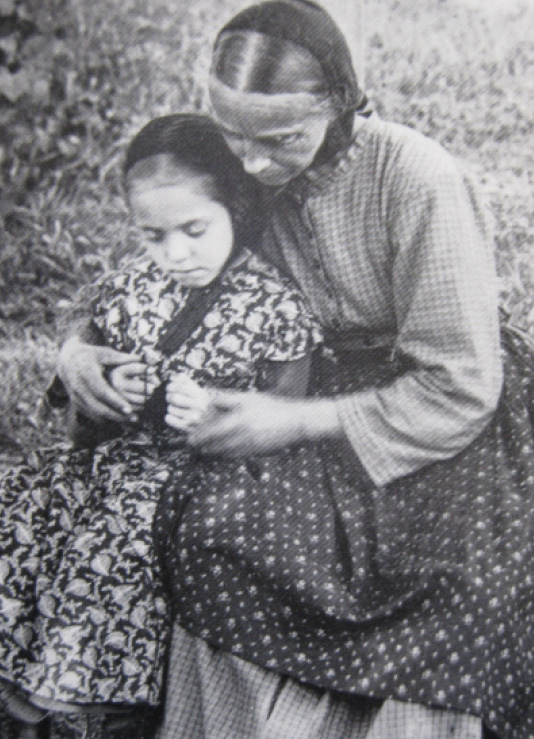
Knitting lesson, circa 1907. Photo by Bertha Shambaugh
My 33-some years have included several community milestones. In 2005 we observed Amana’s sesquicentennial. While many communities use an anniversary like this to rediscover or reconnect with their history, in Amana the event was simply a good reason for a celebration. We are a community that is closely in touch with our history—on a daily basis—thanks in part to the fact that we host so many tourist visitors who are interested in our story. The year 2009 also saw a milestone, though not many people noted it: that year marked the point when our post-communal history exceeded the duration of the communal era in Amana. Our museum exhibits have been reworked to bring our story up to the present, and our guides will attest that visitors to Amana are just as likely to be interested in Amana’s life after communalism and Amana today, as they are in our communal past.
In 2014 the Amana Church observed the 300th anniversary of its founding. We created a special exhibit at the museum in conjunction with the Church programs. The exhibit traced the history of the church through the history of its publications, and it gave us a way to focus on the European roots of our community’s history. The printing heritage is probably the aspect of Amana history that interests me most and I feel especially fortunate to have been around for this tri-centennial observance. From my first days at the museum we have worked to build the collections of books and manuscripts generated by the church and community. Today we can say we have in our collection every known publication of the community with the notable exception of the second edition of the church hymnal printed in 1729.
Our involvement with the community has been a constant over the years. Community support is as strong as ever. Another source of support, mostly financial in this case, has not been so dependable, though. Unlike that of most small local historical societies, our operating budget relies on a high percentage of earned revenue. “Earned revenue” is the museum world’s term for income from admissions and store sales, and for us that translates directly to tourism and the number of museum admissions paid by tourist visitors. I long ago stopped trying to explain—much less predict—tourism’s ebb and flow. It is what it is, as the saying goes, but over the past three decades, admission numbers have generally trended down. The good news is that the trend has recently reversed: the last three years have shown significant increases in visitors and hence revenue. We live with the unpredictability of tourism and earned revenue.
Despite the vagaries of tourist numbers there is a continuing interest in Amana’s story. Even with more competition from other historical sites, the higher cost of travel, and a general decline in museum attendance nationwide, people still come to Amana and to the museum. In 2015 over 12,000 people visited the museum, representing all 50 states and 32 countries. Since we started keeping a list in 1985, the museum has hosted visitors from 116 countries. And although there might be fewer visitors overall, I think those who do come are better informed and coming for more of the right reasons compared to visitors 30 years ago. The internet has made a huge difference in preparing the potential visitor to Amana, both in what Amana has to offer and its history. For example, 30 years ago we spent a lot of time and energy explaining to visitors that Amana was not Amish. It was a major point in our visitor orientation and interaction. The Amana/Amish confusion still shows up occasionally, but it is increasingly rare. For the most part, people choose to come to Amana today knowing what it’s about. Furthermore, while some visitors today might be coming to Amana for the dining, shopping or festivals, many more than in the past want a little history with their entertainment.
People come to the Amana Colonies because of the history, culture, and ambience. We see many different interests. Some people are curious about how the communal system worked, why it ended, or how people adapted to the new way of life. Some focus on the religious roots, or the state of the religion today. I think the specific interests all stem from that fact that Amana, past and present, represents an alternative to ordinary American life and culture. Amana’s communal heritage presents an alternative social and economic American experience. The landscape, village lay-out, and architecture of Amana had and still has a different look than other American towns. The friendliness of residents, the sense of community and Gemuetlichkeit give Amana a different feel than most other places. Visitors seem to appreciate all of those things.
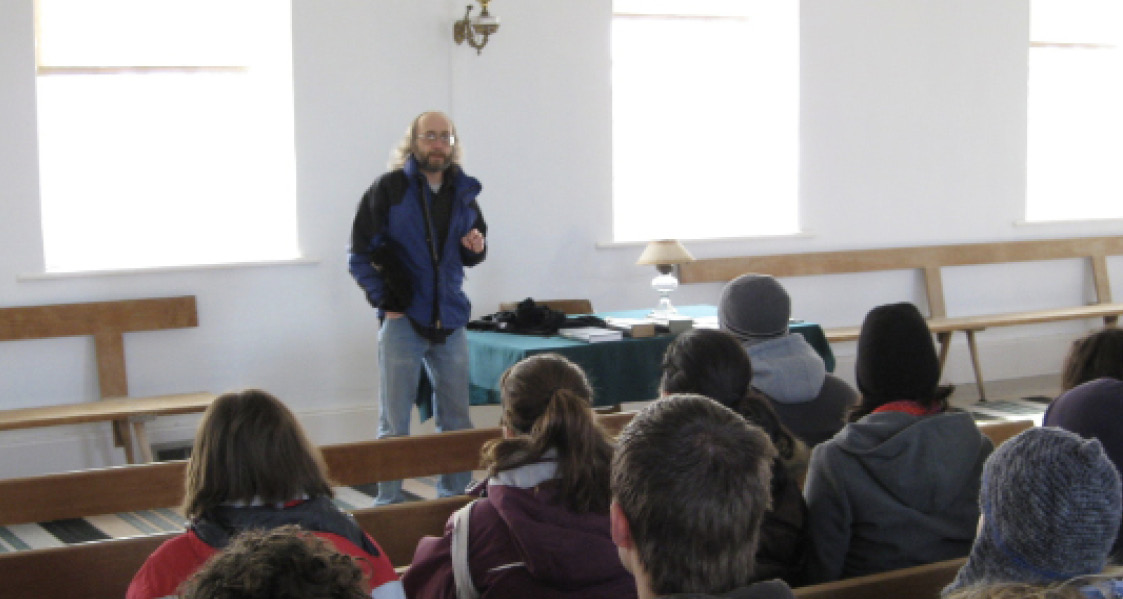
Lanny Haldy addressing visitors in the Homestead Church Museum. Photo courtesy of Jon Andelson
So what has changed? The obvious I suppose: the passing of time means essentially the passing of generations and the demographic and cultural change that goes with it. For the Amana Heritage Society that has meant several things. First, it means that we have had to try to reach out to a new audience: more recent residents and business owners who might or might not have any Amana lineage. But while they might not have a family link, we have found there is a more concrete one, or perhaps I should say brick, stone, and wood. The Amana landscape and built environment is still a very strong and direct link with our past. The history of the building and the people and families who lived or worked there provides an excellent opportunity to connect with a new property owner and community member. Another new audience that was a challenge to reach—but is easier now with websites and social media—is those people who are descendants of Amana but living far away, who nevertheless have a sense of belonging. Amana it seems still provides a “grounding” or foundation for many who might have lived here only in their youth or perhaps even not at all.
The passing of generations has also changed the way we do things at the museum. Thirty-three years ago we didn’t have to worry about our “interpretive plan.” Our museum guides were mostly Amana residents who had lived in the communal era. We simply let them talk to visitors and tell their stories. Museum patrons learned what life was like in the communal system from people who had actually lived it. I don’t think you can do better than that. Now I find myself talking about my parents or my grandparents—retelling their stories. Still today we have knowledgeable museum docents/guides who talk with, interact with, museum visitors. There is a recurring emphasis in museum philosophy to provide the visitor with an interactive experience. Twenty-five years ago that might have meant pushing a button or opening a box. Today it’s a touch screen. I strongly believe that the best interactive experience a museum visitor can have is interacting with another person—a museum guide. We know we reached people when they ask questions, express opinions, and/or share their personal experiences. I personally find it very rewarding when, while I talk about life in Amana, audience members start talking about their experiences. I remember one tour many years ago of about 15 people that included one Japanese-American woman. After I had spoken about daily life and family life in communal Amana, she remarked how much that reminded her of how her grandmother had described life back home. We made a connection.
Thirty-three years ago our primary resource for Amana history was the generation that had experienced communal living. Our primary resource was people and our primary research tool was the telephone. When we had a question, we would phone someone we thought would know: “How did you….?” “Where was the….?” “Who was in charge of…?” Still today, our main resources—the ones used most often—are our collections of oral histories and historical photographs, both of which give history a personal face, a connection with people. For all the concern with utilizing technology in museums, ultimately it is the stories of people of the past that resonate with people today.
The same generation that gave us information, also provided us with another resource: knowledge of the German language and the old German script. One of our biggest challenges at the museum, and as a community, is to translate the huge body of German-language heritage into English. And one of our biggest frustrations is that we have so much material in German that is not utilized because of the language and script barriers. Over the years we have relied a lot on community members, on local Amana folks, to transcribe and translate, but increasingly we need to look elsewhere.
As I prepare to retire from my position this October, I find that my role has also changed. These days people, including younger people in Amana, ask me about the past. Thirty-three years ago I was doing the asking. Thirty-three years ago I was collecting, documenting and using Amana’s historical resources. Now I’ve become one.
